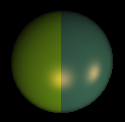Diferencia entre revisiones de «KES2009 Reflectance Analysis»
| (No se muestran 24 ediciones intermedias de 2 usuarios) | |||
| Línea 1: | Línea 1: | ||
* [http://www.kesinternational.org/ KES 2009] | * [http://www.kesinternational.org/ KES 2009] | ||
[[Imagen:Kes2009.jpg|300px|thumb]] | [[Imagen:Kes2009.jpg|300px|thumb]] | ||
[[Imagen:ball-1.png|300px|thumb]] | [[Imagen:ball-1.png|300px|thumb]] | ||
[[Imagen:Fish.png|300px|thumb]] | [[Imagen:Fish.png|300px|thumb]] | ||
=KES 2009 Special Session on Intelligent Systems for Reflectance Analysis= | |||
=== Chairs === | === Chairs === | ||
| Línea 17: | Línea 17: | ||
===Rationale for the special session=== | ===Rationale for the special session=== | ||
Reflectance Analysis is a key process in computer vision systems and applications. It allows the robust segmentation of the images. It has been studied and applied in autononomous robotics, multimodal human computer interaction and remote sensing. There are some physical models of the interaction between light and the surfaces that have been used either for image rendering (visualization) or for image analysis. The most general is the BRDF model used in visualization programs. The Dichromatic Reflection Model has been proposed for the reflectance analysis of general images. This model is local and generalizations involving spatial information and non-linear effects will greatly increase its usefulness in real life applications. Knowledge | Reflectance Analysis is a key process in computer vision systems and applications. It allows the robust segmentation of the images. It has been studied and applied in autononomous robotics, multimodal human computer interaction and remote sensing. There are some physical models of the interaction between light and the surfaces that have been used either for image rendering (visualization) or for image analysis. The most general is the BRDF model used in visualization programs. The Dichromatic Reflection Model has been proposed for the reflectance analysis of general images. This model is local and generalizations involving spatial information and non-linear effects will greatly increase its usefulness in real life applications. Knowledge Based Inteligent tools may provide this generalization. Other related paradigms that can benefit from the application of Intelligent Systems tools are Color Constancy and Retinex. The special session is intended to gather researchers applying Reflectance Analysis to real life problems and applications, or proposing innovative computational methods. | ||
===Topics of interest=== | ===Topics of interest=== | ||
| Línea 34: | Línea 34: | ||
* Shadows | * Shadows | ||
* Computational Intellligence for Reflectance Analysis | * Computational Intellligence for Reflectance Analysis | ||
* BTF (bidirectional texture function) and BSSRDF (bidirectional surface scattering reflectance distribution function) and widen your application areas | |||
===Important dates=== | ===Important dates=== | ||
* Submission of papers: | * Submission of papers: 29 March 2009 | ||
* Notification of acceptance: 25 April 2009 | |||
* Notification of acceptance: | * Final paper publication files to be received by: 23 May 2009 | ||
* Final paper to be received by: | |||
===Program committee (tentative)=== | ===Program committee (tentative)=== | ||
| Línea 50: | Línea 49: | ||
;Richard M. Friedhoff | ;Richard M. Friedhoff | ||
;Casey A. Smith | ;Casey A. Smith | ||
;H. Ragheb | ;H. Ragheb -- | ||
;R. Hancock | ;R. Hancock | ||
;Stephen Grossberg | ;Stephen Grossberg | ||
;Z.G. Pan | ;Z.G. Pan | ||
;Jiuai Sun | ;Jiuai Sun -- | ||
;J.H. Xin | ;J.H. Xin | ||
;P. Kakumanu | ;P. Kakumanu | ||
;N. Bourbakis | ;N. Bourbakis | ||
;Hui-Liang Shen | ;Hui-Liang Shen | ||
;Thomas M. Lehmann | ;Thomas M. Lehmann -- | ||
;Todd Zickler | ;Todd Zickler | ||
;Yihong Wu | ;Yihong Wu -- | ||
;Kuk-Jin Yoon | ;Kuk-Jin Yoon -- | ||
;In-So Kweon | ;In-So Kweon | ||
;Javier Toro | ;Javier Toro -- | ||
;Sei-Wang Chen | ;Sei-Wang Chen -- | ||
;Ron O. Dror | ;Ron O. Dror | ||
;Edward H. Adelson | ;Edward H. Adelson | ||
| Línea 84: | Línea 82: | ||
;Jun’ichiro Seyama | ;Jun’ichiro Seyama | ||
;J. Lellmann | ;J. Lellmann | ||
;J. Balzer -- | |||
;A. Rieder | ;A. Rieder | ||
;J. Beyerer | ;J. Beyerer -- | ||
;Rogerio Feris | ;Rogerio Feris | ||
;Ramesh Raskar | ;Ramesh Raskar | ||
| Línea 96: | Línea 94: | ||
;Guy Godin | ;Guy Godin | ||
;Todd Zickler | ;Todd Zickler | ||
;Marc Ebner | ;Marc Ebner -- | ||
;Harold B. Westlund | ;Harold B. Westlund | ||
;Gary W. Meyer | ;Gary W. Meyer -- | ||
</td><td valign=top> | </td><td valign=top> | ||
| Línea 116: | Línea 114: | ||
:Harvard University, Cambridge, USA | :Harvard University, Cambridge, USA | ||
:National Laboratory of Pattern Recognition, Institute of Automation, Chinese Academy of Sciences, Beijing, China | :National Laboratory of Pattern Recognition, Institute of Automation, Chinese Academy of Sciences, Beijing, China | ||
: | :Computer Vision Lab, Department of Information and Communications, GIST, Republic of Korea | ||
:Robotics and Computer Vision Lab. Dept. of EECS, KAIST, Korea | :Robotics and Computer Vision Lab. Dept. of EECS, KAIST, Korea | ||
:Grupo de Ingeniería Biomédica, Universidad de los Andes, Venezuela | :Grupo de Ingeniería Biomédica, Universidad de los Andes, Venezuela | ||
| Línea 166: | Línea 163: | ||
===Paper submission=== | ===Paper submission=== | ||
[http://www.prosemanager1.co.uk/kes2009is/submitpaper.asp Web page to upload your paper] | |||
Select IS05: Intelligent Systems for Reflectance Analysis | |||
''Conference proceedings will be published by Springer-Verlag'' | |||
===Author's guidelines=== | ===Author's guidelines=== | ||
[http://kes2009.kesinternational.org/submission.php http://kes2009.kesinternational.org/submission.php] | |||
Revisión actual - 16:19 27 feb 2009
KES 2009 Special Session on Intelligent Systems for Reflectance Analysis
Chairs
- Ramón Moreno
- Manuel Graña
Computational Intelligence Group, UPV/EHU
Contact email
Rationale for the special session
Reflectance Analysis is a key process in computer vision systems and applications. It allows the robust segmentation of the images. It has been studied and applied in autononomous robotics, multimodal human computer interaction and remote sensing. There are some physical models of the interaction between light and the surfaces that have been used either for image rendering (visualization) or for image analysis. The most general is the BRDF model used in visualization programs. The Dichromatic Reflection Model has been proposed for the reflectance analysis of general images. This model is local and generalizations involving spatial information and non-linear effects will greatly increase its usefulness in real life applications. Knowledge Based Inteligent tools may provide this generalization. Other related paradigms that can benefit from the application of Intelligent Systems tools are Color Constancy and Retinex. The special session is intended to gather researchers applying Reflectance Analysis to real life problems and applications, or proposing innovative computational methods.
Topics of interest
- Shape from shading
- Shape from Reflection Analysis
- Isolating Specular Component
- Reflectance Maps
- Reflectance Models
- Specular and Lambertian Surfaces
- Geometrics and Photometrics Invariants
- Methods for Chromatic Illummination Estimation
- Color Spaces for Reflectance Analysis
- Mathematical Morphology of Color Spaces and their applicantion in Reflectance Analysis
- Color Constancy
- Shadows
- Computational Intellligence for Reflectance Analysis
- BTF (bidirectional texture function) and BSSRDF (bidirectional surface scattering reflectance distribution function) and widen your application areas
Important dates
- Submission of papers: 29 March 2009
- Notification of acceptance: 25 April 2009
- Final paper publication files to be received by: 23 May 2009
Program committee (tentative)
|
|
|
Paper submission
Select IS05: Intelligent Systems for Reflectance Analysis
Conference proceedings will be published by Springer-Verlag


